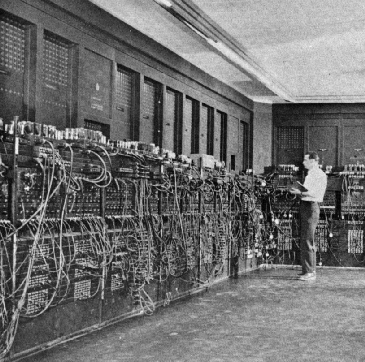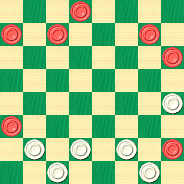The Checker Maven
Jump to navigationThe Winner Is: The Computer

We've often praised the checker analysts of yore; they had only raw skill and brainpower available to them. There were no supercomputers or 10-piece databases to aid them, yet they still got an amazing amount right.
But the computer, far from "spoiling" the game of checkers, has shown us some deep and subtle things about our game. At times, the old analysts stand corrected when the computer finds something completely unexpected.
We don't think those old analysts would at all mind being overruled. Their quest was for the truth and we think they'd be happy to see that goal served.
Today we have a game that was played something like 75 years ago. The original published analysis makes a lot of sense when you read it; it's practical and more than a little compelling. But the computer has a lot to say, as we'll see in the run-up below.
| 1. | 11-15 | 22-17 |
| 2. | 15-18 | 23x14 |
| 3. | 9x18 | 17-14 |
| 4. | 10x17 | 21x14 |
| 5. | 8-11 | 26-23 |
| 6. | 4-8 | 24-20 |
| 7. | 11-15 | 28-24 |
| 8. | 6-10 | ... |
Once considered weak but actually quite acceptable.
| 8. | ... | 31-26 |
The original analysis claims that 25-21 should win for White, but it really doesn't.
| 9. | 10x17 | 23x14 |
| 10. | 17-21 | 25-22 |
| 11. | 1-6 | 29-25 |
The shot with 30-25 loses after 30-25 21-30 22-17 30-23 27-4 6-9 and Black should win. Here White would hold the draw most easily with 22-17. The actual move played, 29-25, was originally declared to be a loser. Deep computer analysis shows that White gets a slim draw.
| 12. | 15-18 | 22x15 |
| 13. | 7-10 | 14x7 |
| 14. | 3x28 |

WHITE
White to Play and Draw
W:W32,30,27,26,25,20:B28,21,12,8,6,5,2.
White is a man down! What's the catch? Why shouldn't this be a straighforward man-down loss?
But note that Black's man on 28 is in the dog hole. That's never a good sign. White does have a draw, though the original analysts, lacking computers, didn't see it. Can you?
This is a very hard problem indeed, but the solution is quite rewarding and useful in over-the-board practice. Do give it a try, even if you need to turn to your computer or our own computer solution, which you can access by clicking on Read More.![]()
Solution
In the solution below, numerous variations are possible. We've chosen one computed by Ed Gilbert's remarkable engine, KingsRow, with his 10-piece endgame database.

WHITE
White to Play and Draw
W:W32,30,27,26,25,20:B28,21,12,8,6,5,2.
| 14. | ... | 25-22 |
| 15. | 5-9 | 22-18 |
| 16. | 9-13 | 27-24 |
| 17. | 13-17 | 18-14 |
| 18. | 2-7 | 26-23 |
| 19. | 17-22 | 23-19 |
| 20. | 7-11 | 14-10 |
| 21. | 6x15 | 19x10 |
A nice maneuver.
| 22. | 12-16 | 10-7 |
| 23. | 16-19 | 24x15 |
| 24. | 11x18 | 7-2 |
White has managed an early King. But his work is hardly over.
| 25. | 18-23 | 2-7 |
| 26. | 22-26 |
An interesting bridge ending.
| 26. | ... | 7-10 |
| 27. | 26-31 | 20-16 |
| 28. | 31-27 | 10-7 |
| 29. | 8-11 | 16-12 |
| 30. | 11-16 | 7-10 |
| 31. | 27-31 |
It's a clear standoff here.
| 31. | ... | 10-15 |
| 32. | 16-20 | 15-18 |
| 33. | 31-27 | 18-15 |
| 34. | 27-24 | 12-8 |
| 35. | 24-27 | 8-3 |
| 36. | 27-24 | 3-7 |
| 37. | 24-27 | 7-10 |
| 38. | 27-24 | 10-14 |
| 39. | 24-27 | 15-19 |
| 40. | 27-31 | 19x26 |
| 41. | 31x22 | 14-9 |
| 42. | 20-24 | 9-13 |
| 43. | 22-18 | 13-17 |
| 44. | 18-23 | 17-22 |
Drawn.
Black can't play 24-27 without losing by 24-27 22-26 21-25 26x19 25-29 32x23. White gets a man-down draw.
If you didn't find this solution, don't feel bad. You're in good company. But the drawing technique found here is certainly something to study and learn.
You can email the Webmaster with comments on this article.
